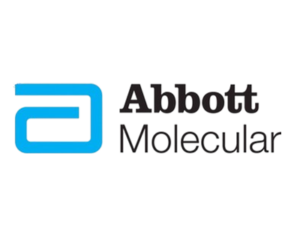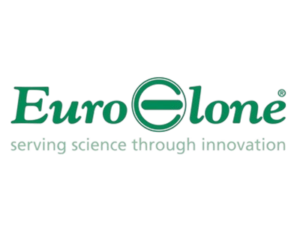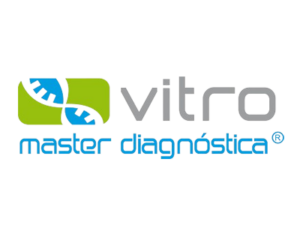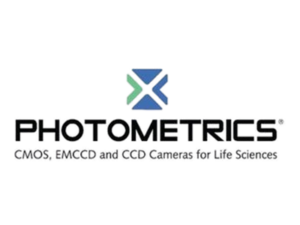DSS: Redefining Biotechnology & Life Science in India
- About Us
- Products & Services
PRODUCTS & SERVICES
-
Kits Reagents & Consumables
- Cytogenetics
- Dyes
- Fluorescence In Situ Hybridization (FISH)
- High-Performance Liquid Chromatography (HPLC)
- Histology
- Immuno Histo Chemistry (IHC)
- Molecular Pathology & Diagnostics
- Multiplex Ligation-Dependent Probe Amplification (MLPA)
- Nucleic Acid Extraction
- PharmDx
- Real Time PCR
- Sequencing
- Special Stains
-
Instruments
- Biosafety
- Cameras
- Cell Culture monitoring
- CO2 Incubator
- Cytogenetics Systems
- Digital Slide Scanners
- Electrophysiology Systems
- Endoscopy System
- Fluorescence In Situ Hybridization (FISH)
- H&E
- Immuno Histo Chemistry (IHC)
- Microfluidics
- Microscopes
- Molecular Pathology & Diagnostics
- Multichannel Imaging Systems
- Real Time PCR
- Special Stains
- Software
- Accessories
- Advanced Material
-
Kits Reagents & Consumables
- Applications & Specialities
All Applications & Specialities
- Brands
- Contact Us
-

-
 0
0
- ☰
- About Us
- Products & Services
-
Kits Reagents & Consumables
- Cytogenetics
- Dyes
- Fluorescence In Situ Hybridization (FISH)
- High-Performance Liquid Chromatography (HPLC)
- Histology
- Immuno Histo Chemistry (IHC)
- Molecular Pathology & Diagnostics
- Multiplex Ligation-Dependent Probe Amplification (MLPA)
- Nucleic Acid Extraction
- PharmDx
- Real Time PCR
- Sequencing
- Special Stains
-
Instruments
- Biosafety
- Cameras
- Cell Culture monitoring
- CO2 Incubator
- Cytogenetics Systems
- Digital Slide Scanners
- Electrophysiology Systems
- Endoscopy System
- Fluorescence In Situ Hybridization (FISH)
- H&E
- Immuno Histo Chemistry (IHC)
- Microfluidics
- Microscopes
- Molecular Pathology & Diagnostics
- Multichannel Imaging Systems
- Real Time PCR
- Special Stains
- Software
- Accessories
- Advanced Material
-
Kits Reagents & Consumables
- Applications & Specialities
- Brands
- Brand - Life Sciences
- 3i
- ABBERIOR INSTRUMENTS
- Abbott Molecular
- ADS Biotec
- APPLIED SPECTRAL IMAGING
- BioAir Tecnilabo
- DAKO (AGILENT)
- Eden Tech
- Elveflow
- ENTROGEN
- EUROCLONE
- EVIDENT
- Genea
- Genial Helix
- Hamamatsu Photonics
- Invivoscribe
- MASTER DIAGNOSTICA
- MBF BIOSCIENCE
- Medical Tek Co. Ltd
- MILESTONE MED SRL
- Molecular Machines & Industries
- MRC HOLLAND
- NeoDx
- Onward Assist
- PHOTOMETRICS
- Profound
- SCIENTIFICA
- µCyte
- Seqlo
- Brand - Industrial
- Brand - Life Sciences
- News & Events
- Career
- Contact Us
- Testimonial
- Blog
- R&D
- CSR

WHY MLPA (MULTIPLEX LIGATION DEPENDENT PROBE AMPLIFICATION)?
BY Muskan Jain November 2, 2022
MLPA is stands for multiplex ligation dependent probe amplification developed by MRC HOLLAND in 2002. It is PCR based technique which help to detect CNV (copy number variation) up to 60 DNA sequence in a single reaction with only single primer pair. MLPA utilize 40-60 probe each target specific DNA sequence. It’s not only detected small chromosomal abnormalities (deletions or duplications), known point mutation and SNPs but also determine methylation status of promoter.
WHAT IS MLPA PROBE?
It is a hybridization probe of single stranded DNA which consists of two parts LPO (left probe oligonucleotide) and RPO (right probe oligonucleotide). LPO have forward PCR primer and DNA hybridisation sequence. RPO have reverse PCR primer and DNA hybridisation sequence with additional stuffer sequence to modulate the length. Each probe in MLPA have unique length so that they can identified in amplification process.
HOW DOES MLPA WORK?
MLPA methods consist of following methods-
- DENATURATION– The sample DNA is denatured by heating it resulting in single stranded sample DNA.
- HYBRIDISATION -Pairs of probes i.e., LPO AND RPO bind with the sample DNA.
- LIGATION– Thermostable ligase is applied to the hybridised DNA so that pair of probe gets joined.
- AMPLIFICATION– All successfully ligated DNA are amplified by PCR using florescent labelled PCR primer.
- FRAGMENT SEPRATION– PCR product is separated by length using capillary electrophoresis which are compared with size standard which act as a molecular ruler.
- DATA ANALYSIS-Analysis is done by Coffalyser.net which is a free MLPA analysis software developed BY MRC-Holland. Coffalyser.net take raw data and give robust result by comparing each test sample with the set of reference sample.
APPLICATION OF MLPA-
1.MLPA for first line screening-
DMD (DUCHENNE MUSCULAR DYSTROPHY)- It is X linked disease affecting more males than females caused by mutation of DMD gene. DMD gene duplication cannot be detected by PCR. MLPA ASSAY Is a first-choice method used for detecting heterozygous deletion or duplication. Approx. 70% DMD are identified with MLPA probe P034-P035.
SMA(SPINAL MUSCULAR DYSTROPHY)- It is autosomal recessive trait .SMA is neuromuscular disease which led to symmetric proximal muscle weakness due to degeneration of the anterior horn cells of the spinal cord. It is caused by deletion of SMN1 gene. With the help of MLPA SMN1 gene can be differentiated with SMN2 gene which is similar to SMN1. MLPA probe P021 SMA and P060 SMA screening is performed.
2.MLPA IN TUMORE PROFILING– In ovarian cancer, MLPA PROBE P002, BRCA1 AND P045 BRCA2 are used to identify deletion and duplication associated with ovarian cancer. And also MLPA probe to detect methylation status and point mutation in cancer patient.
MLPA have variety of other applications like –
- Prenatal diagnosis of chromosomal abnormalities.
- Genome mutation detection and mutation.
- Epigenetic biomarker for disease diagnosis.
- Diagnose molecular and genomic methodology for haematologist.
- Advances in hemoglobinopathy detection etc.
SO, THE QUESTION IS WHY MLPA?
Recently, it is found that MLPA assay became most widely used technique for detecting genetic diseases. Because of its high throughput and low input, gives result within 24hrs which saves our time. It also cut off cost by minimising the use of variety of primer. Highly sensitive and accurate tool for detecting copy number changes and require very less amount of DNA sample up to 50ng.MLPA have several advantages over other available technique like the use of MLPA to detect CNVs offers several advantages over other available techniques such as Southern Blot and FISH i.e.
- it discriminates two sequence which differ by a single nucleotide.
- Identify single gene aberrations which is not detected by other technique.
- Characterize specific breakpoint site of gene.
So, large application of this approach is the result of a number of advantages provided by MLPA assay when compared to other techniques.
Latest Articles
Understanding Immunofluorescence and Its Diagnostic Applications
BY admin March 25, 2025
Immunofluorescence testing ranks among medicine’s most reliable diagnostic tools, especially when detecting autoimmune diseases. The sensitivity rates reach 100% for certain conditions. Medical professionals have managed to keep this technique at the heart of diagnostics since 1942. It provides exceptional accuracy in identifying diseases in multiple organ systems. The immunofluorescence...
Read MoreLiquid Biopsy: A Non-Invasive Approach to Cancer Detection
BY admin March 25, 2025
Cancer is the second leading cause of death worldwide. This grim statistic highlights the need to save lives through better detection methods. We have a long way to go, but we can build on this progress in cancer diagnostics, where liquid biopsy stands at the vanguard of medical advancement. Liquid...
Read MoreEnhance Genetic Testing with Advanced FISH Instruments from DSS Imagetech
BY admin March 18, 2025
One of the most revolutionary techniques of modern molecular biology and genetics, fluorescence in situ hybridization is a precision-based technique known widely for use in genetic diagnostics and research, helping to determine chromosomal anomalies, gene mutation, and many more genetic markers. DSS Imagetech is a trusted company dealing with biotechnology...
Read More




























